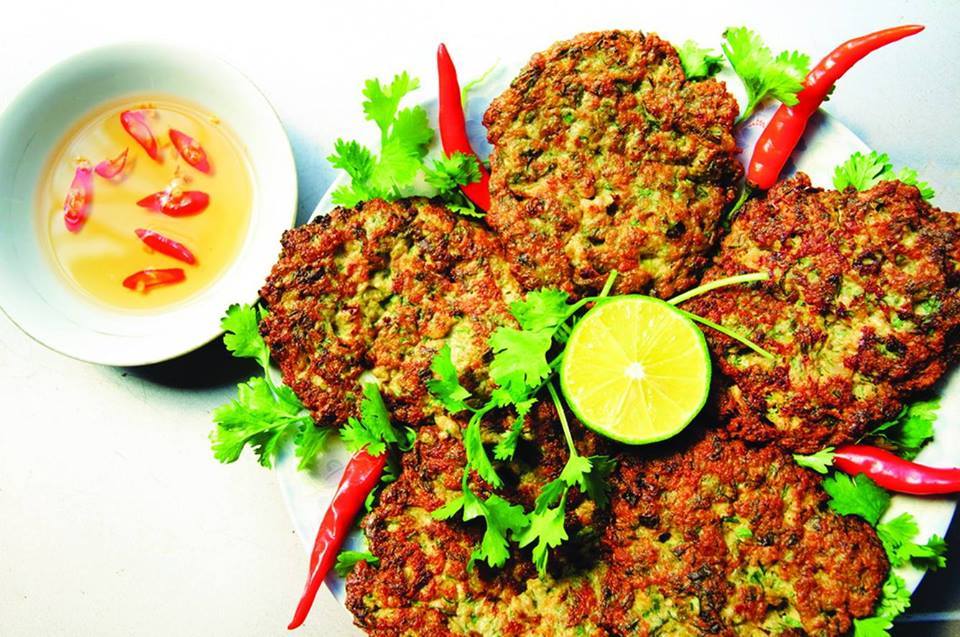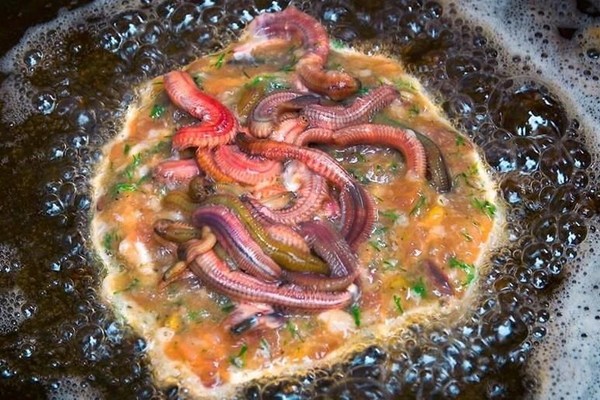Chả ruoi (cha ruoi), a sandworm omelette or sandworm omelet, is a seasonal Vietnamese dish made from sea worms. Although it is a bit unsightly because the basic ingredient is a worm which is 2 cm in size, some people say it tastes delicious like caviar.
Reporting from Odditycentral, every year in late autumn, stalls in northern Vietnam, especially in Hanoi, serve very special dishes. Even though it looks normal, it actually contains unique ingredients.

Chả ruoi (cha ruoi), looks like an omelette dish mixed with various spices and has a meat-like texture with a seafood flavor that comes from the sandworms.
Beaten egg, tangerine peel, onion, anise, and spices are the main ingredients before adding them to the two-inch (5 cm) long sea worm. The end result of the food tastes like a typical omelette with a meaty taste, which cannot be found in the months leading up to winter.
The "palolo" sandworm is not unique to Vietnam. It can be found along the coast in many countries that have borders with the Pacific Ocean, including China, Japan, Indonesia, or Samoa.
The sandworms are usually fried and served on toast, baked together with bread, or even eaten alive. But, why is it consumed only one or two months a year? The answer, because it has something to do with the mating habits of these sea creatures. Technically, only some of the palolo worms are harvested for consumption.
Experiencing epitoky breeding
Palolo sandworms, reproduce epitoky, which is a process in which worms start to grow special segments from behind. Then keep increasing until the worms can be clearly divided into two parts.
This backside contains eggs and sperm, and during mating, usually the ninth and tenth month of the lunar calendar, they escape from the worms and then rise to the surface forming a large, creeping mass.
Sandworms continue to live at the bottom of the ocean and can experience epitoky several times a year. Since humans only harvest a few segments of adrift reproduction, the sandworm population is unaffected.
Several centuries ago, fishermen and farmers did not know when these worms gathered, crawled, and surfaced. So consider it a fortune to see its appearance. Therefore, people would jump into the water and catch as much as possible using nets or bare hands.
However, nowadays Vietnamese farmers have started filling their lakes and rice fields with worms because these animals can live in the mud. When worms appear on certain days, during the lunar calendar, they dry up the lake to harvest this precious material.
Because sandworms have become a valuable resource in both Vietnam and China, farmers no longer consume them. They prefer to sell it for a profit.
Processing Method

Before being added to the dough to make chả ruoi (cha ruoi), sandworms must be boiled first to remove the tentacles and their fishy smell. Coupled with fresh tangerine zest and herbs.
However, the taste of the sandworms can be too much for some people, so over time a less tough version of chả ruoi (cha ruoi) appears and contains more pork than worm meat.
But for true fans, the more expensive original version is the only real option. In Vietnam's capital, Hanoi, chả ruoi (cha ruoi) is popular all year round. Its aroma filled the street teased a lot of people who love it, but made those who didn't like reflex want to throw up.
Source : nowthisnews.com


















